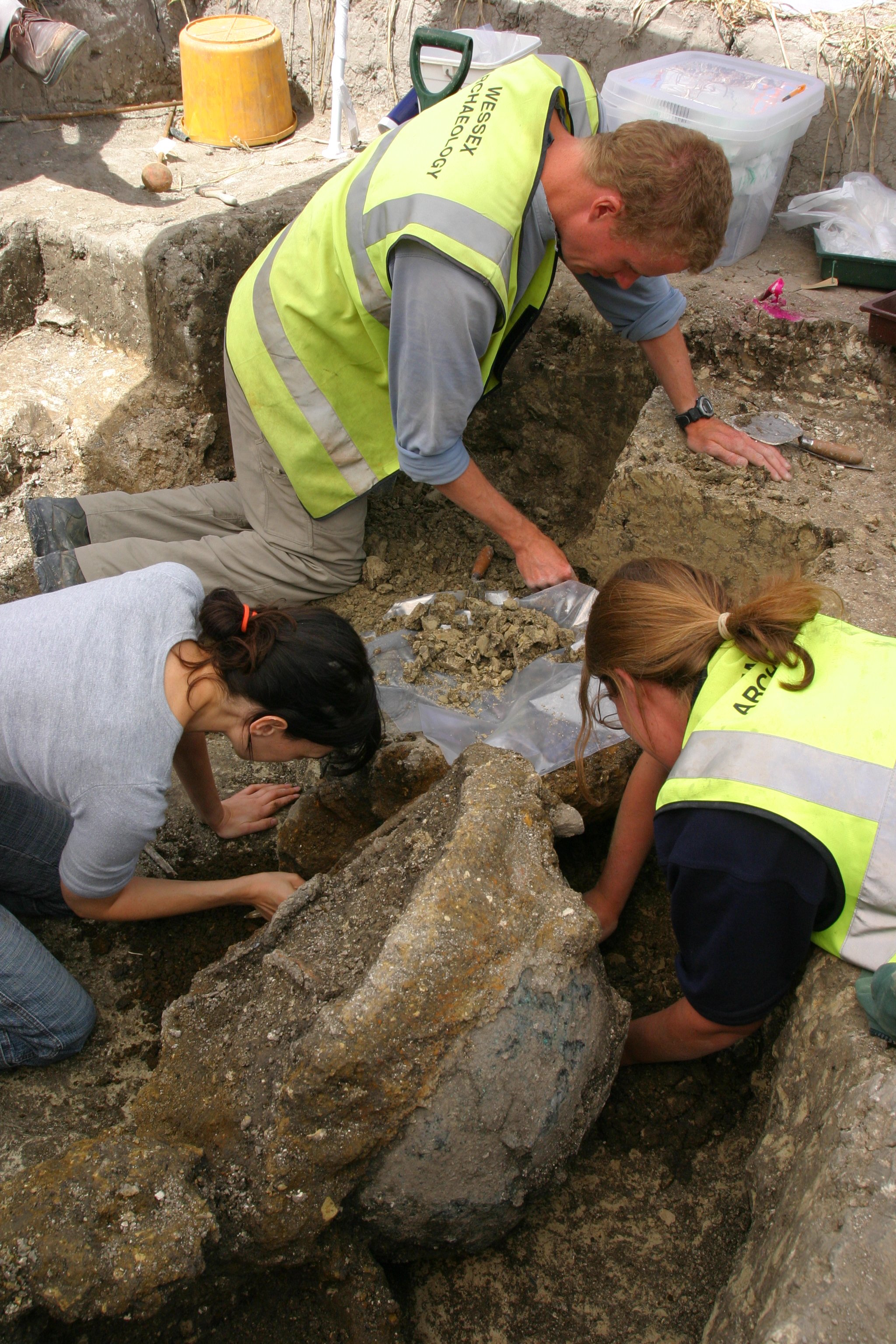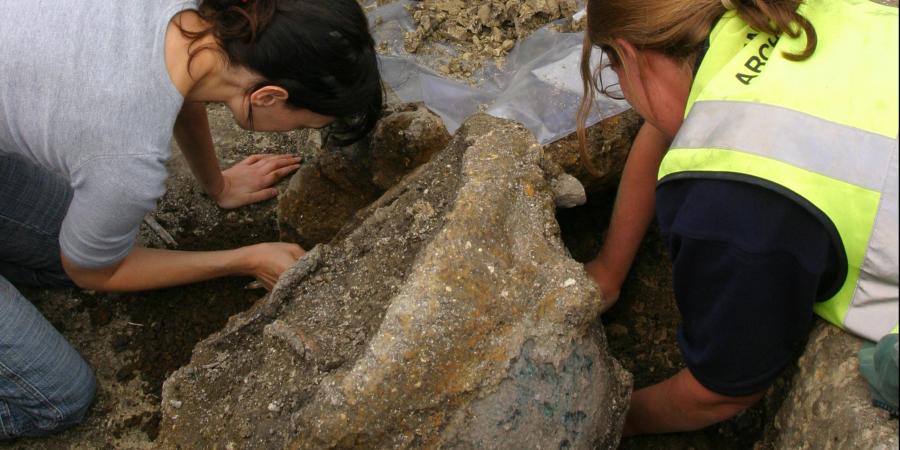In 2004 metal detectorist Peter Hyams found a few pieces of bronze sheet and what looked like a crumpled can in a farmer’s field in Chiseldon. Peter sought the advice of a local archaeologist and the help of the Chiseldon Local History Group to do an initial investigation of the find. When they revealed two more crumpled metal objects they decided that a proper excavation would be needed.
They reported the find to the Portable Antiquities Scheme Liaison Officer for the area. Several months after the find was discovered archaeologists from Wessex Archaeology, conservators from the British Museum and volunteers from the Chiseldon Local History Group arrived back on site to excavate. It turned out that the three objects they had uncovered belonged to a hoard of twelve Iron Age cauldrons.

During the excavation all twelve cauldrons were removed, still full of soil, wrapped in plaster bandages and cling-film to keep them intact. The process of removing the cauldrons was very complicated. They were tightly packed within the pit and some of them had corroded and fused together. All of the cauldrons had been buried in the pit at the same time, along with two cow skulls. Some cauldrons were placed right side up, some were placed upside down. One of the cauldrons had purposefully been damaged before it was buried.
Since the excavation the cauldrons have been at the British Museum, where the dirt is slowly being removed and the cauldrons treated to help prevent them from deteriorating. So far one of the cauldrons has been excavated and conserved in the lab. The micro-excavation of this cauldron showed that it had been used before it was buried, though it is not known how long it was used for. It also revealed new information about the construction of Iron Age cauldrons. For more information and a video on the micro-excavation of this cauldron visit the British Museum's Chiseldon Cauldrons blog posts on the British Museum website.
There is still a great deal of work to be done in order to understand these cauldrons. The micro-excavation of the remaining 11 cauldrons began on Monday 4 October 2010 and will take a year to complete. Once each cauldron is excavated it will be possible to do research on any plant matter found in the soil, residue found on the cauldrons, and on any resins that might have been used to make the cauldrons water-tight.
Research on how the site where the cauldrons were found fits into the landscape of North Wiltshire, and on how the cauldrons compare to other Iron Age cauldrons, will also be important to understanding this unique find. We still do not know why the cauldrons were buried, why one cauldron was split in half, or the significance of the cow skulls. Whatever additional information is revealed about this find as the cauldrons are studied is sure to be exciting.
